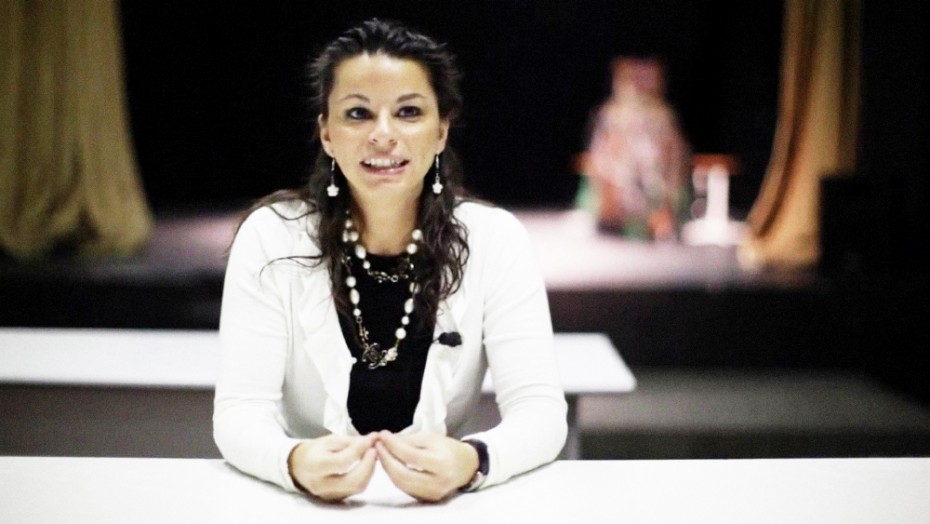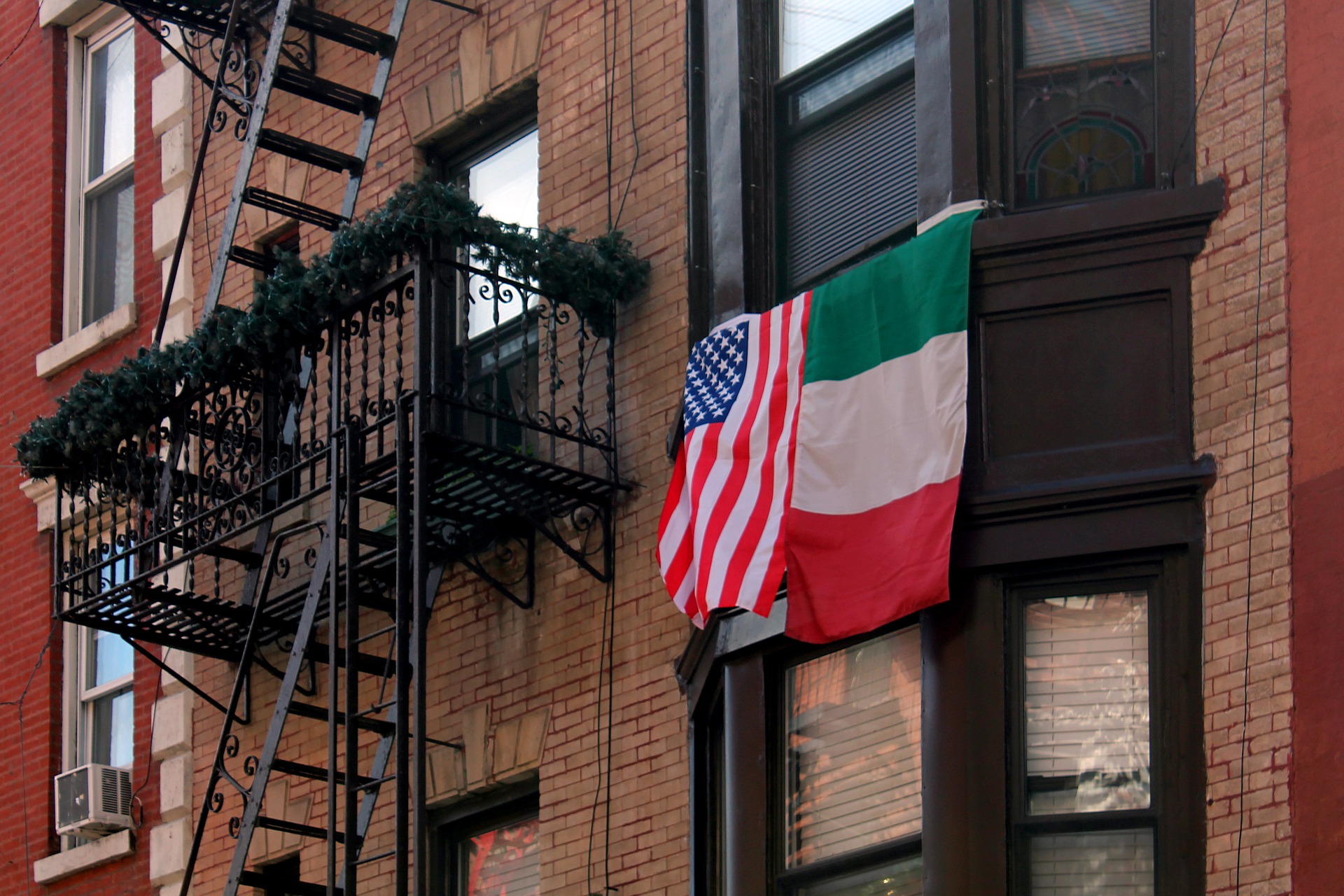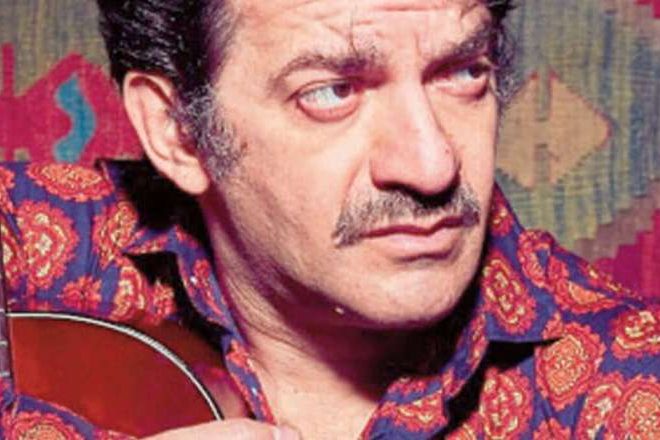The 19th edition of the L.A. Shorts Fest – running at the L.A. Live in Downtown from September 3rd to the 10th – showcased a total of 265 films from 26 countries.
This festival’s distinguishing feature is that it’s officially recognized by the Academy of Motion Pictures Arts and Sciences and the winning shorts from each of its 7 categories may be nominated for the Academy Awards.
Monica Manganelli, a native of Parma, in Emilia-Romagna region, was the only representative of our country at the Festival and the winner for Best Animated Short with her film The Ballad of the Homeless (2015).
Through the following conversation, I had the privilege to become more acquainted with her exquisite artistic sensibility.
Monica, can you tell us about your artistic background and studies?
I studied Architecture at the Institute of Art “Paolo Toschi,” and then Conservation of Cultural Heritage/History of Art at the University of Parma, my hometown. Afterwards, I specialized in Scenography/Set Design. Actually cinema has always been my greatest passion, since I was a child. However, the opportunity to attend a course on Set Design at the Theatre Regio in Parma (Opera House) presented itself, and my destiny was marked: with the lyric theater, it was love at first sight.
Looking at your biography (www.monicamanganelli.net), it’s clear that your specialty is visual art. What was the main challenge in writing The Ballad of the Homeless? And what about your directorial debut?
The main challenge and, at the same time, my goal when I conceived and wrote the short was trying to tell a story with simple gestures, capable of reaching the audience’s heart and soul. Of course, the storyline was as important as the aesthetic and visual research. For this reason, there are no dialogues in my short film and, like the title suggests, it’s a ballad. I wanted the music to be predominant, as an instrument to engage the audience.
My debut as a director wasn’t difficult. For a very long time, working as set designer and concept artist in theatre and movie productions, I’ve been collaborating with directors of movies, commercials, and theatre shows. So I knew very well the production process and it was natural for me to start working as a director. Besides, many famous directors of contemporary movies were set designers as well. With The Ballad of the Homeless I felt the need to take a step forward in my career and to start telling stories from my point of view and visual intent.
How did the 2012 earthquake in Emilia Romagna region affect you?
At the time of the earthquake in Emilia Romagna, I was working in Berlin on the German-American science fiction film Cloud Atlas, and it was a shock for me. Later on, I came back to Emilia and collected stories that have inspired my short film. For instance Tommy, the protagonist, was inspired by the true story of a child, the son of a firefighter, who was afraid to leave his house. This same episode opens my movie.
How would you define the animation style that you chose?
I’ve used a combination of 2D and 3D techniques, but the final product is totally CG (computer graphics). The characters are completely modeled and animated in 3D, while the virtual sets are digital, matte painted sets, then animated on a space called 2.5, with cinematography compositing.
My team and I took care of the opening credits by employing the technique of motion graphics animation. From a visual point of view, I wanted to recreate a watercolor style, so we put a texture of that type throughout the short, with the intent to better portray a “poetic” world.
Correct me if I’m wrong but, watching your short, I’ve noticed a direct quotation of Salvador Dalí’s most famous painting The Persistence of Memory, alongside the metaphysical works of Giorgio De Chirico. Can you expand on your artistic influences?
Surrealism in general has been a crucial source of inspiration, together with Edward Gorey’s pen-and-ink drawings. I wanted to “swing” between the style of a sensitive, poetic world to one of contrasts, with black & white incisive signs. The continuous contrast between the two styles was really sought after.
Chagall and Magritte are two other artists, who were of inspiration for me, with their warm shades of brown. Indeed, the brown color represents the “earth” of Emilian people. Likewise, an important reference has been the film Novecento by Bernardo Bertolucci, which is set in my native Emilia.
Did your theatrical experience provide you with useful tools in your short’s mise-en-scène?
Obviously, my experience with theater was very important and influenced me in developing this project. As I mentioned before, the most important aspect was the use of music: Massimo Moretti wrote an original soundtrack and, after the short was finished, he composed the music, following the movements of the main character and his animation.
How was your short film welcomed so far?
I am very happy about the response that it’s having. And I must say, although it may sound weird, that it’s having a greater success abroad and in major festivals, while in Italy it has not been considered. I really can’t say why! My short film was selected to participate in the last edition of Cannes Film Festival and since then, we toured 13 festivals around the world (Toronto, Poznan, Paris, Berlin, Chennai). In September only, the short will take part in 4 festivals. By the way, being selected for the L.A. Shorts Fest in Los Angeles was very unexpected.
Lastly, can you tell us about your next project(s)?
I’m going back to the world of Opera. Next year, I’ll work on the set design for three operas by G. Donizetti, that is the trilogy of the Tudor Queen: Roberto Devereux, Maria Stuarda, and Anna Bolena, a co-production between Theatre Carlo Felice in Genoa and Theatre La Fenice in Venice.
I also want to continue to direct and produce my own projects, in particular two documentaries about two Italian creative fields, two works that will explore these artistic worlds from within: lyric theater and fashion. One is a documentary that I would like to promote and produce, titled An Opera in Winter: Roberto Devereux. The director will be a colleague, Stefano Casertano, who has already realized documentaries on artists’ communities, such as The last days of Tacheles in 2014, and will celebrate the fascination of theatrical creation. It will be an ambitious project, concerning performing arts in one of the most important Opera houses in Italy and Europe, Theatre Carlo Felice in Genoa. Whereas my personal movie project, When the dream comes true: Fontana Sisters, will be halfway between documentary and animation, telling the story of famous Italian designers Micol, Zoe and Giovanna Fontana, who have created Made in Italy and haute couture.





























